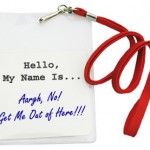 Earlier this week I spoke with Shane Mitchell, formerly of Cisco and due to speak at the upcoming Smartworking Summit, about the future of work, and how this might affect our organizations, and indeed our society. Much of the chat centred around the desires of employees (nay people) to do work they enjoy, and whether commuting to an office was the best way to enable that.
Earlier this week I spoke with Shane Mitchell, formerly of Cisco and due to speak at the upcoming Smartworking Summit, about the future of work, and how this might affect our organizations, and indeed our society. Much of the chat centred around the desires of employees (nay people) to do work they enjoy, and whether commuting to an office was the best way to enable that.
There has been a lot of talk about clusters and the role of them in encouraging innovation, with much of this talk focusing on the supposedly serendipitous encounters you will have when surrounded by interesting people. It’s the reason Yahoo! et al have demanded employees return to the office rather than work remotely, and the reason for projects such as the Stevenage Bioscience Catalyst. It’s why so many of us spend large sums attending conferences and other networking events, all in the hope that we’ll have the kind of encounter that will make it all worthwhile.
A new paper sets out to explore whether there is not a better way of doing it. The researchers asked attendees at a science conference to document their expertise, which of the other attendees they knew, and topic areas they were interested in learning more about. This information was then compiled and used to construct two rounds of speed networking, with an algorithm used to match up delegates that could be of interest to one another.
The networking session was divided into two rounds. The first round matched participants with peers that were relatively far from themselves, both in terms of their place in the social network of other delegates, and in their relative expertise. The second round also paired up people far from each other in network terms, but were much more aligned in terms of their expertise in that they had skills the other person wanted to learn.
So, basically, it was designed to make useful connections between delegates by matching up people that wouldn’t ordinarily know each other, but would hopefully gain from doing so. Sounds simple doesn’t it? When delegates were surveyed after the conference, their responses were very positive, with over 50% of delegates announcing potential new collaborations emerging from the networking sessions.
That such an approach is being tested is perhaps not that surprising. After all, similar fields such as dating have rapidly moved over to an algorithmic approach, with people flocking to dating websites for help finding Mr or Mrs Right. It seems a natural progression for networking events and conferences to take a similar approach.
What of the workplace however? We’ve seen ideas such as LunchRoulette applied in the workplace, whereby random employees are paired up for a lunch ‘date’, in the hope that it will spark some serendipitous splendour. It doesn’t seem beyond the realms of possibility for spiders to hoover up all of the digital content produced within a company and suggest colleagues that we could benefit from getting in touch with.
Suffice to say, relying purely on a computer to do this kind of match making for us is probably not ideal, but there is a great deal of trust being placed at the moment in the ability of chance to spark creativity. Whilst those fortuitous connections do undoubtedly occur, it seems only sensible to try and help that process along where possible.
That's actually a really nice idea. Like it.
Dating sites have been doing this for sometime now so it kinda makes sense doesn't it? There's nothing worse than randomly going through events or conferences hoping to meet someone interesting.
This is definitely a great idea. I wonder how the people at http://www.peoplescience.info have cracked the 'collaboration algorithm'?